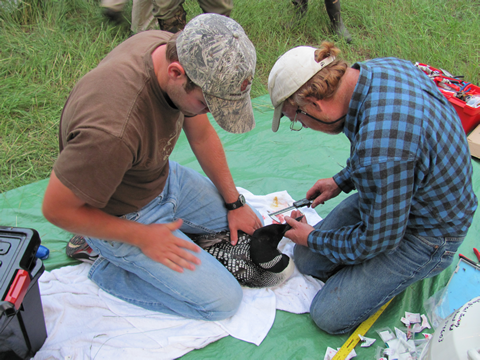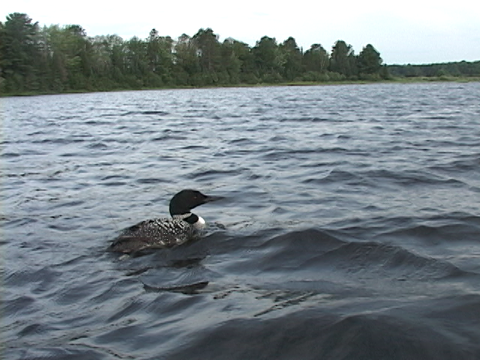Loon Study - Update
Study of Common Loon Migratory Movements and Feeding Patterns
USGS researchers are studying the migratory movements and feeding patterns of adult and juvenile common loons as they migrate toward their winter homes to the south. By using satellite tracking devices implanted in the loons from Minnesota and Wisconsin, scientists expect to learn about risks posed to common loons during their annual cycle, essential information needed by managers to develop important conservation strategies for the common loon and other waterbird species. "This study will also help managers better understand how loons fare as they head to their wintering grounds along the Gulf of Mexico and Atlantic coasts," said UMESC wildlife biologist Kevin Kenow. "Prior to this study, little was known about movement and habitat use along their entire migratory routes." In addition to satellite transmitter-marked loons, geolocator tags have been attached to other loons, which record daily location, temperature, light levels and water-pressure data and log the foraging depths of these diving birds. "This information will help shed light on how loons exploit food resources and potential risks to such things as exposure to avian botulism in the Great Lakes and contaminants on wintering grounds," said Kenow. |
|||||||
|
|||||||
For more information, contact: |
Page Last Modified: April 3, 2018




